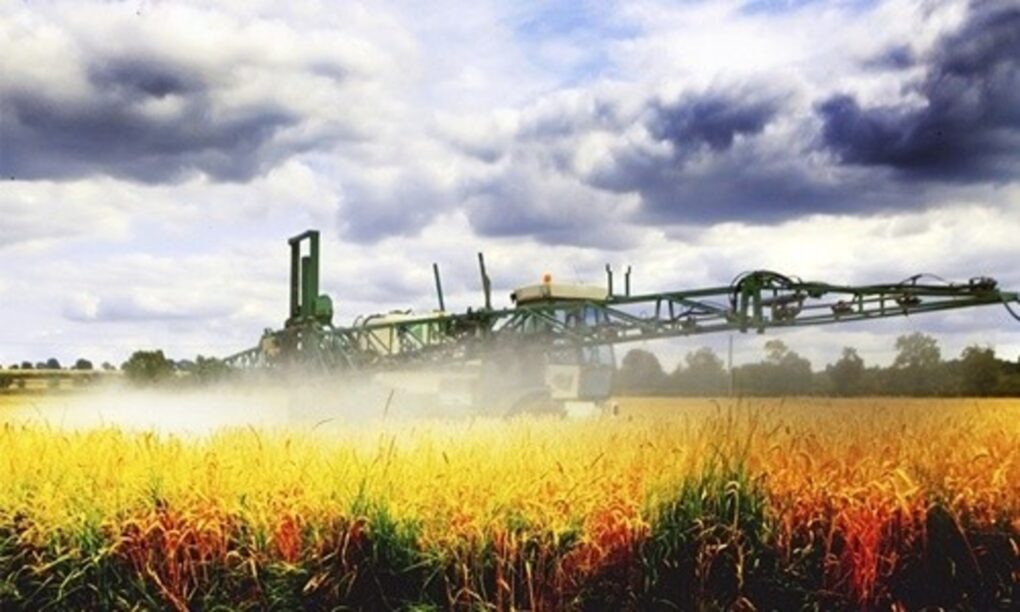Is it safe to eat a crop that has been desiccated?
As of October 17, nearly 81% of Saskatchewan’s crops were harvested (91% in Manitoba & 73% in Alberta). When compared to the 5 and 10-year rate of harvesting averages it looks like our farmers are on track. However, after a relatively promising summer, storm clouds brought larger than normal precipitation and snow. What you might not be aware of is that when crops and fields are wet, harvesting conditions are less than ideal. It’s likely that many Prairie farmers had to rely on desiccation to get their crops off this fall.
What is Desiccation?
The term desiccation means to ‘dry up’. In crop production this means to dry the plant, making it easier to harvest. The optimal time for harvest is very short. This means that farmers need to get their crops off as quickly as possible to ensure they get the highest quality and therefore higher prices. When combining a crop, the cut section of the plant is thrashed in the machinery, removing the seed from the straw. If the straw is too wet, it becomes difficult to properly separate the two, meaning that less crop is harvested as it passes through the combine.
There are two types of desiccants: true desiccants and pre-harvest herbicides. Both are applied to a mature plant prior to harvesting to achieve relatively similar results. In addition to physically drying the plant, if the crop is desiccated properly, there is a reduced risk of weather damage or shattering loss. A true desiccant is a contact herbicide; rapidly killing and drying out the above-ground portion of the plant over a few days. A pre-harvest herbicide is a slower acting desiccant that is absorbed and translocated to the root. This process of killing the plant at the root can take up to three weeks.
Should we be worried about chemical residues?
In Canada, there is no need to worry. This is because Health Canada regulates the pesticides maximum residue limit (MRL) that are permitted on our foods. The MRL is set well below the amount which could raise health concerns. A 0% tolerance for chemical residues simply does not exist in our food supply chains, regardless of the production process. Virtually every food we eat has some level of chemical residue on it, even organic foods.
Desiccant residues and toxicity levels
| Canadian MRL (ppm) | LD50 (ppm) | |||||
|---|---|---|---|---|---|---|
| Lentils | Wheat | Rat | Mice | Rabbit | ||
| Reglone (Diquat) | 0.2 | 0.2 | 120 | 233 | 188 | |
| RoundUp (Glyphosate) | 4 | 5 | 5600 | 1538 | Up to 10000 | |
| References | Health Canada. (2016). Maximum Residue Limits for Pesticides - Diquat. | |||||
| Pesticide Management Education Program. (2016). Diquat dibromide. | ||||||
| Pesticide Management Education Program. (2016). Glyphosate. |
Reglone and Roundup are the most widely used true desiccant pre-harvest herbicide. As shown in the residue and toxicity table above, we can see that Canada only allows a very low dosage of Reglone’s active ingredient. The means in every kilogram of dry lentils consumed treated with Reglone, you will ingest only 0.2 mg of diquat. This active ingredient is only acutely toxic and is rapidly eliminated through our digestive tract.
Lethal Crops?
The residues on our crops are not lethal at normal rates. If you look at the lethal dose to 50% of the experimentally fed animals (LD50), we find that our desiccants residues should not be a health concern. Assuming humans are as sensitive chemical residues as rats, roughly 600 kg (1322 lbs.) of lentils would be needed to be consumed over a short period to raise lethal concerns of diquat. When you look at glyphosate, it’s even less likely to be toxic, as the chemical is poorly absorbed by our digestive tract.
Farmers little helper
Farming is a risky business. They never know what the weather has in store. Luckily our farmers have desiccants to help them quickly get the crop off without losing yield, quality or compromising our food safety.


I disagree with the basic context of this article. Preharvest systemic herbicides are not desiccants and should not be referred to as such. Desiccants disrupt membrane integrity allowing the contents of the affected cells to evaporate rapidly. Preharvest herbicide (glyphosate is the only one at present) is for perennial weed control primarily, and will also kill off lush green weed material to help facilitate harvest, but do not allow a producer to manage the timing of their harvest much better than doing nothing. Research has shown that WHEN APPLIED AT THE CORRECT TIMING, preharvest herbicide provide very little benefit to the drydown of the crop. Research has also shown that the only time preharvest herbicides do provide some harvest management for the crop itself (not related to weed management) is when they are applied too early and result in elevated residue levels.
Thanks for the comment Clark. I’d be very interested in reading the research you reference.
Yikes. The authors use LD50 values to make conclusions about “health” concerns; however, LD50 is the dosage producing a 50% death rate (or an immediate kill rate due to toxicity). I would rather want data on the dosage of roundup that leads to cancer or some other disease state. And if the impact of glyphosate or other compounds on human (or test animal) health has not been thoroughly investigated, then you cannot simply conclude that it is safe at arbitrary low concentrations. Relating low levels to levels that cause death by toxity